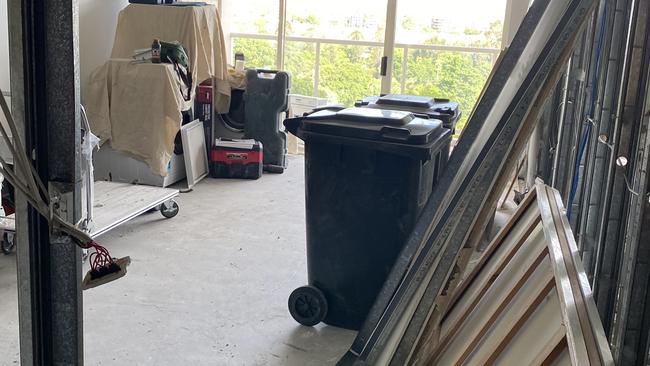‘Shambles’: Queenslander’s QBCC apartment renovation nightmare
Unwitting Queenslanders may have collectively paid millions to the state’s building watchdog for insurance premiums that are absolutely worthless.

News
Don't miss out on the headlines from News. Followed categories will be added to My News.
Unwitting Queenslanders may have collectively paid millions to the state’s building watchdog for insurance premiums that are absolutely worthless.
The Queensland Builders Construction Commission has admitted some apartment owners have forked out thousands for insurance they are actually ineligible for.
It’s understood, the QBCC issued more than 600,000 policies over the last four financial years, this is for all residential construction work contracts reported to the QBCC by licensed contractors in Queensland resulting in the issuing of a QHWS policy.
This includes new build constructions and renovations to all eligible types of residential dwellings, including single detached dwellings and multiple-unit buildings (three storeys and under) and swimming pools.
Building work carried out in a structure of more than three storeys (not counting one storey if it comprises mainly a carpark) is not considered residential construction work under the relevant legislation, and therefore is not insurable under the QHWS.
But some apartment owners may have unknowingly paid for uninsurable works.
In a email viewed by the Courier Mail, the QBCC said it simply did not have the resources or capacity to check the individual applications.
“QBCC has issued over 150,000 policies each year in the last four financial years. The large majority of these were raised online by contractors and are reliant on contractors providing accurate information in our online portal,” it said.
“The resources that would be required to seek contract documentation and plans for each and every one of these jobs and review them in detail before accepting a premium is prohibitive.”

Furious homeowners stung by the clause, after submitting insurance applications to QBCC for incomplete or defective work.
Apartment owner Jason Sharp is one of the homeowners stung by the clause.
He took out insurance with QBCC in December and received confirmation that “your works are now covered by the Queensland Home Warranty Scheme”.
But his planned five-month renovations was left in “shambles” when building company AQWA Constructions went into liquidation in April, owing $3m to clients and suppliers.
Mr Sharp said he was told by the liquidators to direct all claims to the QBCC. But when he submitted a claim it was rejected.
He was told by Mr Galvin’s liquidator to direct all claims to the QBCC. But when he submitted a claim it was rejected.

Mr Sharp said the regulator should not be collecting premiums from those who own “uninsurable apartments”.
“If the QBCC’s interpretation of the legislation is valid, then every premium received by the QBCC for an apartment renovation in a high-rise building should also be refunded (not just mine),” Mr Sharp said.
A Housing Institute of Australia spokesman said the building regulator should not be collecting premiums for multiple-unit dwellings over three storeys, while Master Builders Queensland advocacy manager Ian Grant said it’s “critical for QBCC to have due diligence and systems in place when issuing insurance.
“The QBCC should only be issuing a notice of cover (i.e. an insurance policy) for work that is insurable under the scheme,” he said.
“Like all insurers, it is critical for QBCC to have due diligence and other systems in place to make sure that it is not issuing insurance policies that offer no cover or benefit to the insured.”
A review was conducted in 2022 by the Minister at the time for Energy, Renewables, Hydrogen and Minister for Public Works and Procurement Mick de Brenni into the Queensland Home Warranty Scheme.
A QBCC spokesman said “no premium is payable for such work, and no cover is provided”.
“When taking out a policy, contractors are required to answer a series of questions about the nature of the work, including whether the work is for a single dwelling or a multiple dwelling (and if so, the number of storeys),” the spokesman said.
“Policies are issued when the answers provided align with the work being covered by the scheme. The QBCC provides customer with resources to show what work is insurable under the scheme.”



